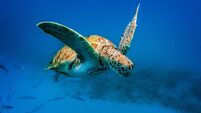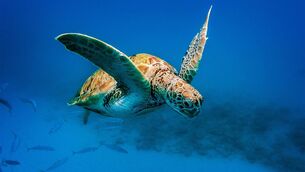Islands of Ireland: White sands and colourful wildflowers on Galway's Inishmuskerry Island
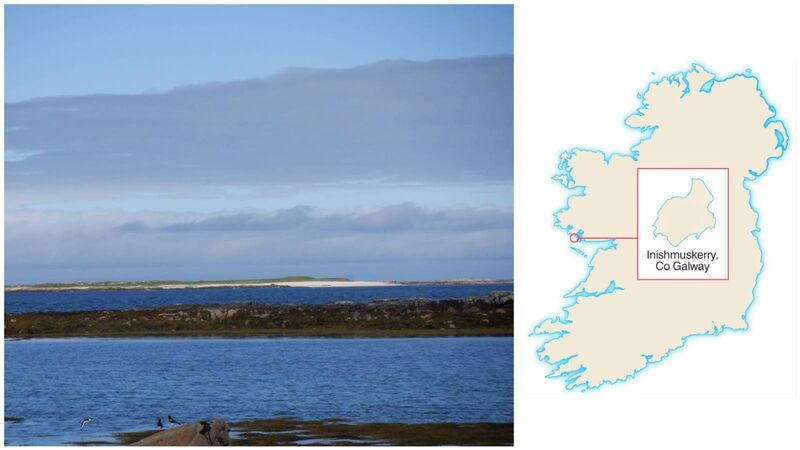
White strands of Inishmuskerry in the distance, Connemara, County Galway. Picture: Dan MacCarthy
Connemara’s Inishmuskerry goes by a second name locally — Spike Island — though no prisoners were in evidence when the visited recently. So it's not fair to compare it with its namesake which is known as Cork Harbour’s Alcatraz.
This 18-acre island at the mouth of Kilkieran Bay is one of several at the approach to the bay with its nearest neighbours Duck Island and Feenish Island. After the fairly barren experience of landing on the nearest landmass, Duck Island, Inishmuskerry comes as a pleasant relief. A lovely beach of golden sand provides a benign contrast for this visitor having arrived over a choppy sea.
A rolling meadow with stunning colours in its array of wildflowers makes this island instantly attractive. Ragged robin like a ripped shirt, the vivid yellow of lady’s bedstraw, and another vibrant yellow in common kidney vetch, were just three of the species thriving on the island. And then a dark green display of reeds revealed some pyramidal orchids.
And the reason for this magnificent performance. Sheep, or the lack thereof. Where sheep graze on islands there is usually just a green sward left behind — as clean as a billiard table. Where they are absent, nature lets loose its riotous potential. And Inishmuskerry is a worthy example of the principle.
Farmers will say they have to graze their animals. Fair enough, but surely a portion of the islands could be fenced off to encourage nature. One man’s pastureland is another’s biodiverse meadow.
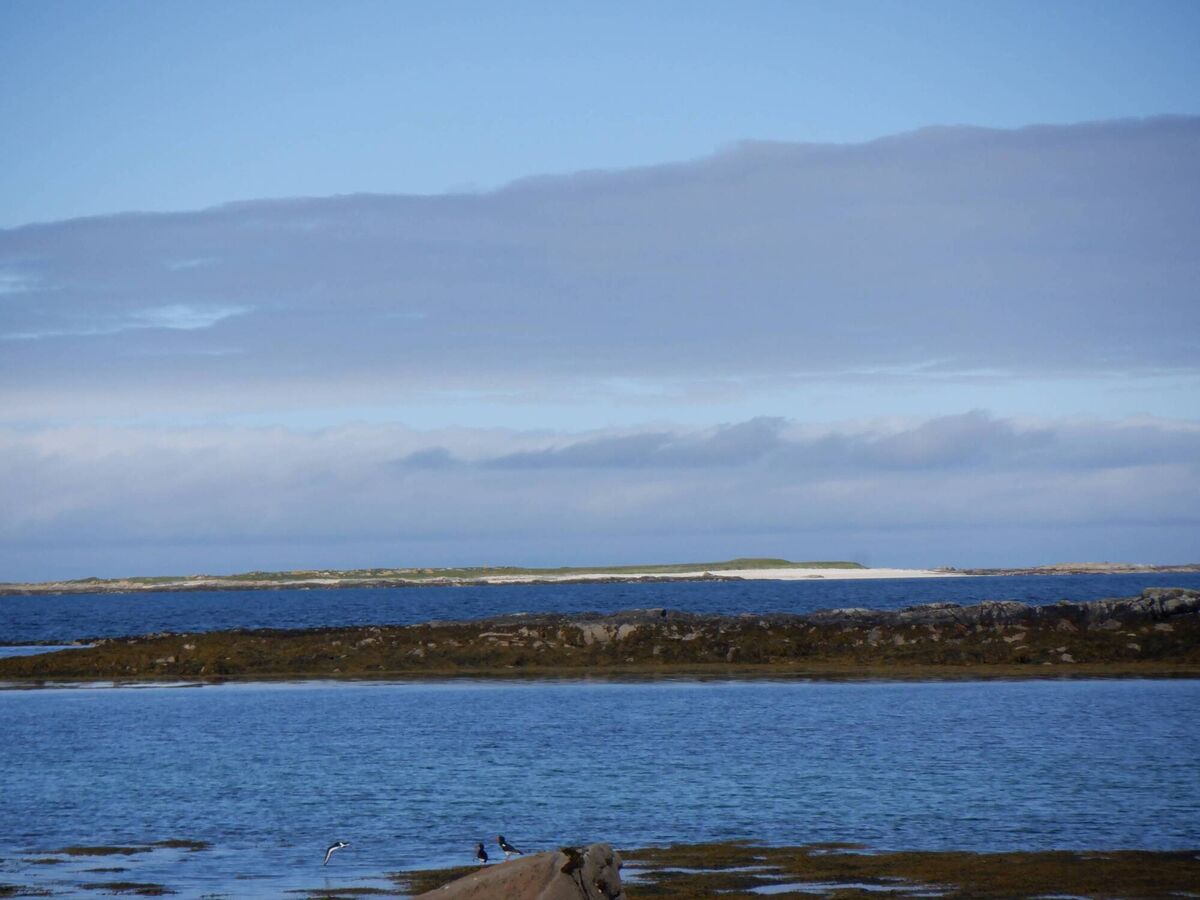
Inishmuskerry’s name is derived from Inis Mhuscraí where muscraí is defined as ‘dank’ ‘moist’ or ‘muggy’ — perfectly aligning with the conditions allowing for orchids to flourish beside the marsh. Its other versions included Inismooskerry and Inis Muscraide.
This record also shows that kelp harvesting was carried out on the island. This was a thriving industry as mentioned by Tim Robinson in his masterwork on the region: . He wrote: “When continental sources of alkali for glass-making and linen processing were cut off during the Napoleonic Wars, kelp was in great demand and the sea heaped its riches on every Connemara shore."
Robinson also noted one of two features of historical interest identified on Inishmuskerry. This was a natural pothole below high water mark which was considered to be a holy well. Dozens of these holy wells are in evidence all along the coast of Connemara.
And archaeologist, Michael Gibbons, has written of evidence of old walls and kitchen middens on the island. Remains of other middens are evident on Feenish, Mweenish and St Macdara’s Island. They indicate prehistoric settlements where people discarded burnt stone, shells, and bone into heaps.
This is an island bereft of people, current or historic. However, a birth record for one Thomas O’Donnell claims that this man was born on the island in 1872. It’s not impossible, but extremely unlikely given that there is no available shelter and almost definitely, no water. Perhaps Thomas’s mother was caught in a storm and forced to give birth in a bothy with the help of family, but we will never know.
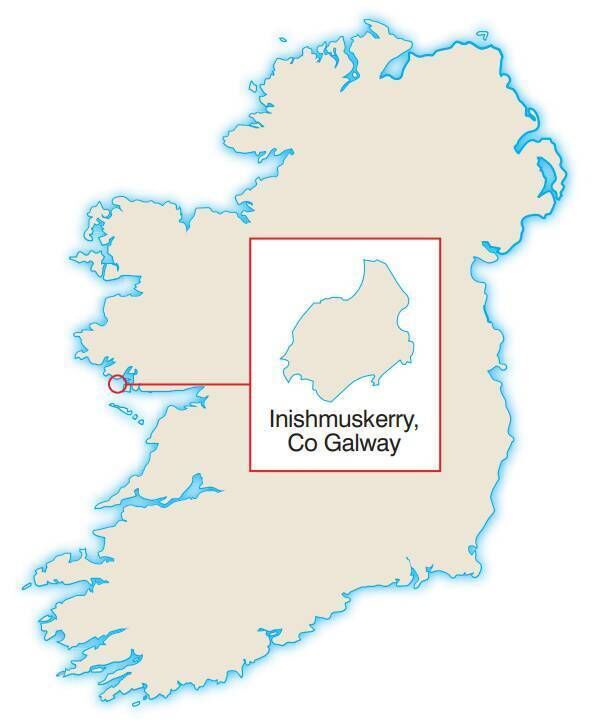
The island is not known to attract many visitors; but when it does they are often taken by its reserved beauty. A correspondent for The Kilmarnock and North Ayrshire Gazette 109 years ago was captivated by the birdlife there.
“The island is uninhabited, or at least so they had told you, but you find that it is not so, for on your arrival clouds of black-headed terns get up from their rocks and begin to swoop and scream over your head and as long as you remain there they will keep you under observation and very indignantly talk about you, up there in their sunny world of wings.”
The writer waxes very lyrically indeed about the pleasures of Inishmuskerry before departing from home: “You are free to enjoy your possession of the island; for everything that we love and enjoy becomes our very own, and the extent of our possessions is only the extent of our love.”
: No ferry. Inquire at village of Carna.
: heritage.galwaycommunityheritage.org
- Connemara: The Last Pool of Darkness by Tim Robinson, Penguin;
- An ‘Overview of the Steelement History and Archaeology of Cuain Chill Chíaráin and its Environs’ by Michael Gibbons, in Biodiversity of Cill Chiaráin Bay, 2005.



